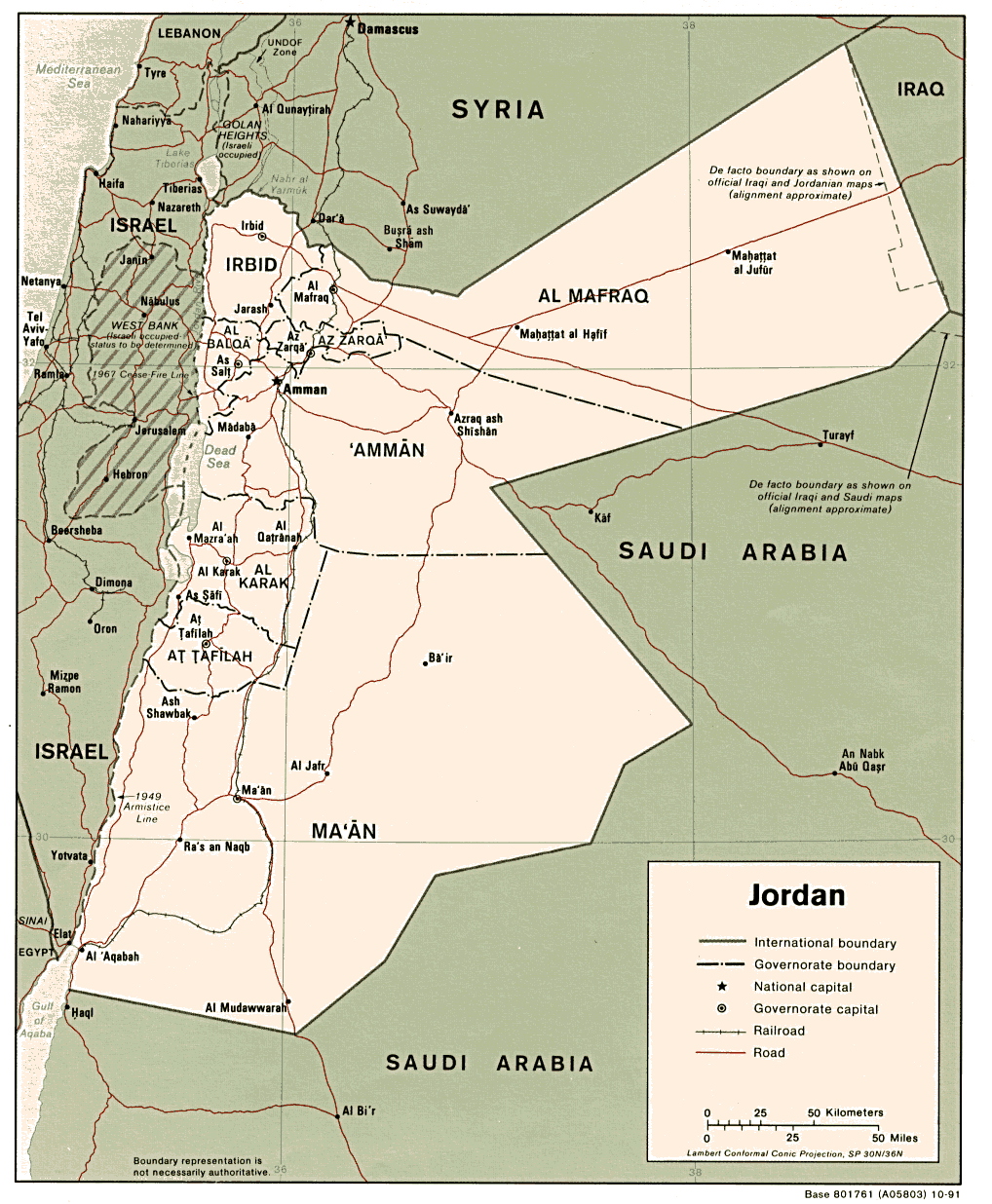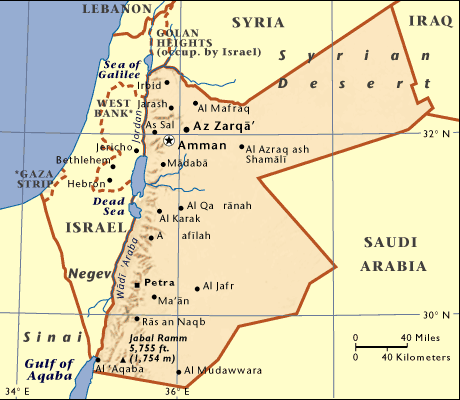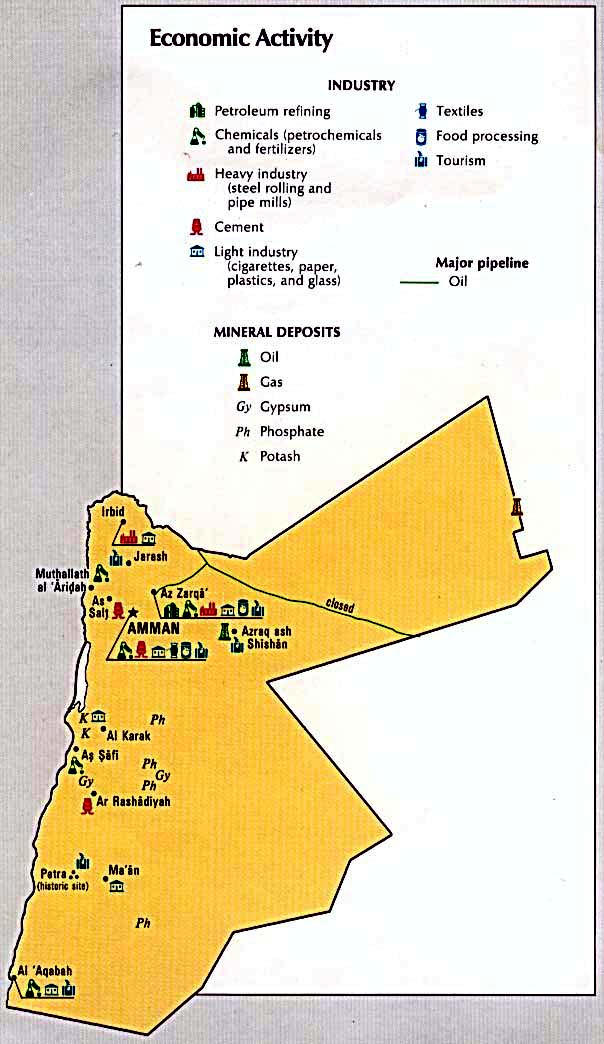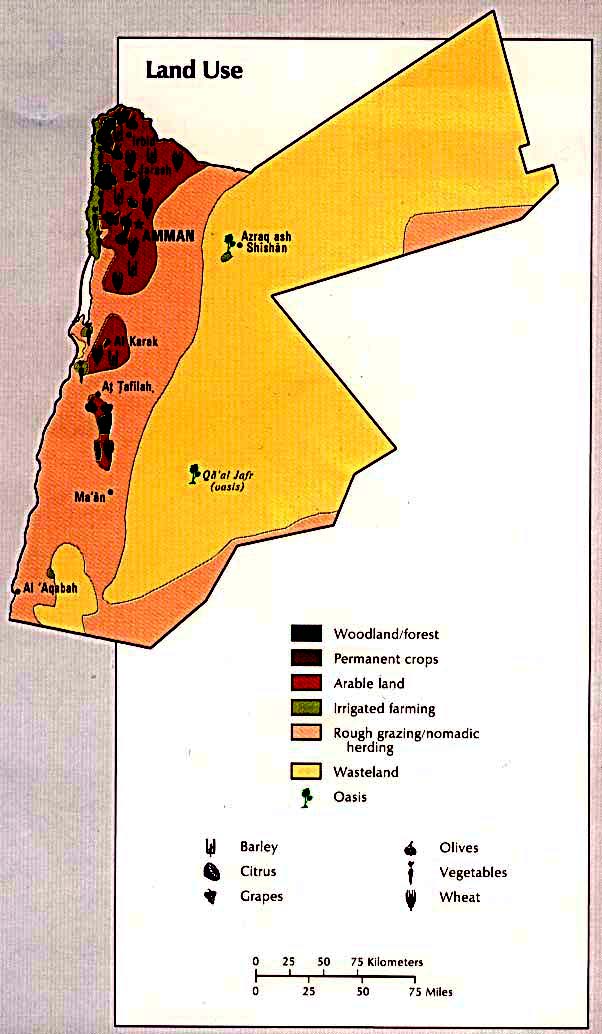The Middle Eastern country of Jordan is a relatively new country. It came to be an official independent country in the year 1946. But it wasn’t always the Jordan that we know today.
Back in ancient times, Jordan used to be a part of land that was collectively known as Palestine. Ancient Jordan contains some of the oldest known sites of ancient civilization. Ancient civilizations such as: the Egyptians, Assyrians, Babylonians, Hittites, Greeks, and Romans fought over the land (South 19).
The Ottoman Empire took over the area in the 16th century, giving it the name Transjordan. Transjordan was not of much importance to them, it was merely a passage way to important religious cities like Mecca and Medina. The Ottoman Turks continued to rule the land for 400 years until World War I when the land was taken over by British forces.
After World War I, the land of the losing countries was split between France and Britain, the winning countries. One of these areas of land is what is now known as present day Jordan.
The British controlled land of Transjordan became a state in April 1921. Abdullah ibn Hussein I was the first leader of Transjordan in 1923. He was an Arab noble descendent of the prophet Muhammad.
Back in 1917, Britain passed a document called the Balfour Declaration. This document gave Jews the right to have a homeland in Palestine, a small neighboring country. Palestinian natives were not willing to lose their land without a fight, so violence quickly broke out. Overtime, this fight has pushed more and more Palestinian refugees into Jordan. An example of this started in 1936. Palestinians peasants started an armed strike against the Jews moving into their country for 3 years. More refugees escaped to the Transjordan area. Today, 3 million people in Jordan are registered as refugees and “displaced persons” (South 29).
A month-long negotiation and one peace treaty later, Transjordan became an independent nation in 1946, adopting the modern name of Jordan. A constitution was written that gave king Abdullah almost complete power over the Indiana-sized country. Unfortunately, King Abdullah was assassinated in 1951. Confusion on who should be the new leader broke out. Finally, Abdullah’s grandson was crowned in 1953 (South 31).
In 1973, another Arab vs. Israeli war broke out, leading to more Palestinian refugees in Jordan. Parliament met for the second time ever in Jordanian history in 1984 and in 1989 the first parliamentary elections were held.
1991 brought the outbreak of the Gulf War. Jordan remained neutral, but it wa again filled with refugees from Iraq and Palestine. 2 years later, a law was passed that allowed multiparty democracy in Jordan. In 1999, King Hussein passed away. His oldest son, Abdullah the Second, was crowned king of Jordan, and he is still the King today (South 37).













No comments:
Post a Comment